Posing for Brands—Part I: Fashion Shows and Onstage
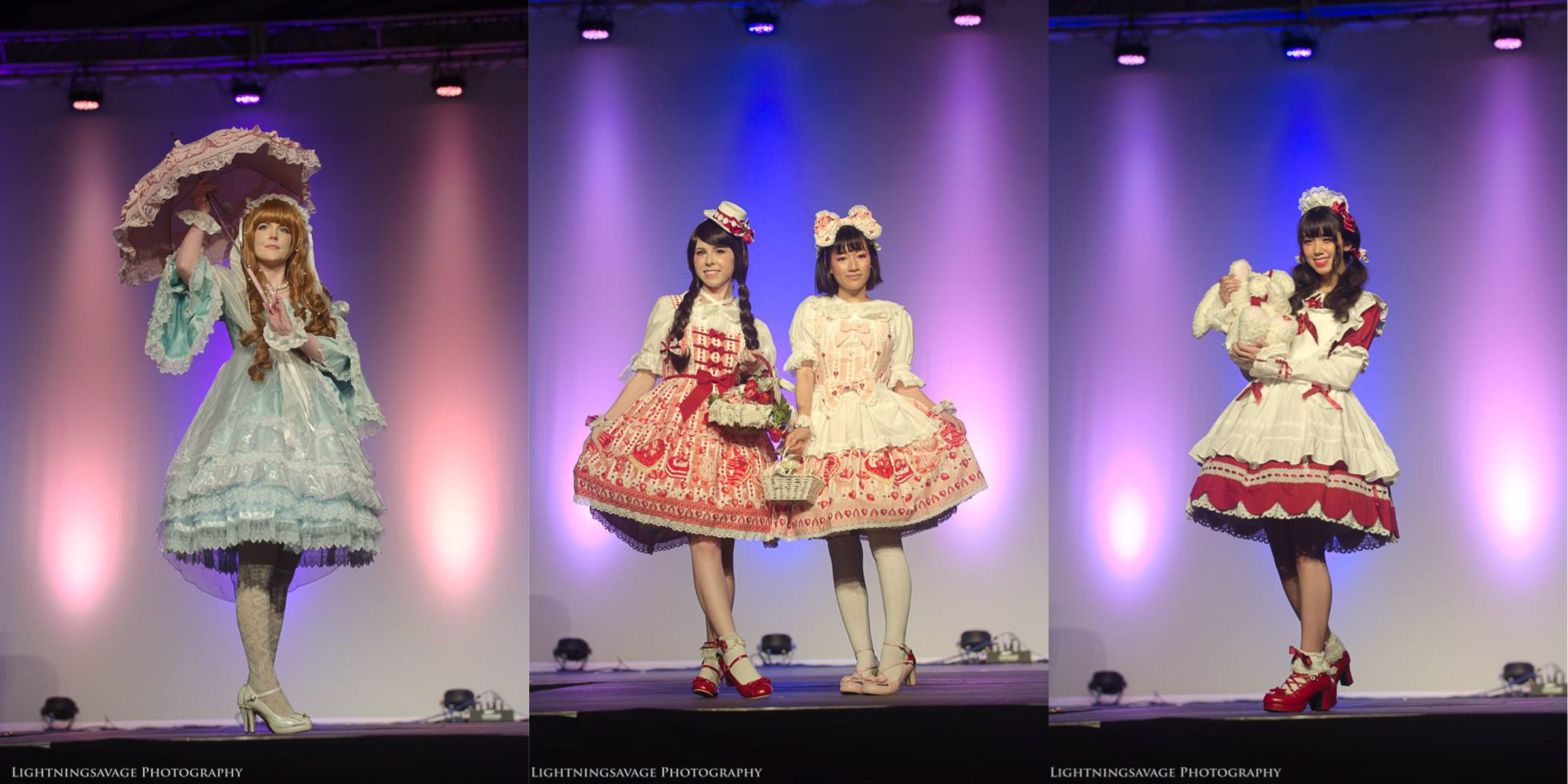
Years ago, I went to a stage posing panel at an anime convention because I had, at the last minute, entered the cosplay contest and was terrified. I’d been onstage before, but only really during band concerts or school plays—no solo appearances, and certainly no event that required any kind of poses or special walk. This panel covered how to act on stage, how to walk, how to pose, and some top tips that the judge wanted to tell contestants to help curb her own frustrations. This panel started a lot for me, as all of her tips applied to any solo or small-group stage presence. Throughout the years, I’ve worked these tips into fashion-focused tips that I can share with fashion show models before they go onstage—and it helps. What follows are these tips and tricks, as well as some input from designers I know personally. We want everyone to succeed onstage and be the best model they can be, and present the brands the best way they can as well.
The Bottom Line: You’re There to Sell
When modeling for brands, you are the mannequin. A living, breathing mannequin with feelings and a personality, but a mannequin nonetheless. You’re there to provide a service to the brand you’re representing, and that service is to help them gain positive exposure and make sales.
Regardless of how you feel about a certain coordinate a designer puts you in, your job is the be the best living mannequin that you can be. It may sound harsh, but ultimately, it is your job to act like the designer wants you to act, walk like they want you to walk, and generally help the show meet the designer’s expectations. Contrary to posing for yourself for, say, an Instagram post, the focus of the photo shifts from you and your personality to the clothes, even if a designer wants you to show (or fake) your happy personality onstage. Ultimately, you are providing a service to the designer of that brand and, in most cases, it’s on a volunteer basis (though sometimes it can be a paid gig).
Because of this shift, there’s also a shift in posing guidelines. The best models onstage are always aware of the clothes they are wearing, their accessories, how they move, and how they interact with their bodies. Instead of wanting the clothes to make them look good, they understand that it is their job to make the clothes look good. It’s backwards, so some posing tips and inspirations guidelines change. Definitely not all of them, but especially when you’re up on stage, things do change a tiny bit.
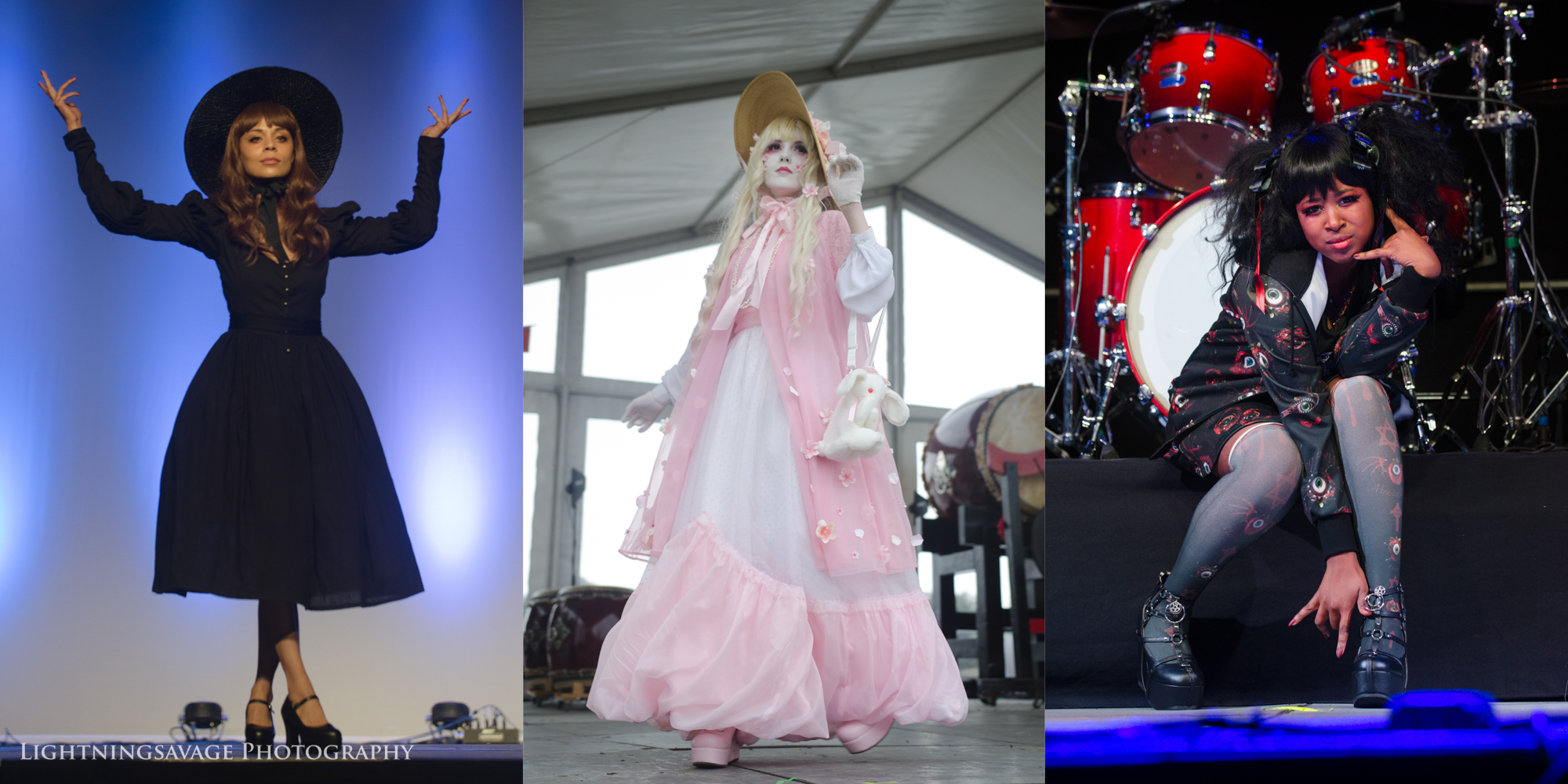
I Do Declare: Tiffany Michelle Thomas | Stevie Quinlan | Bio Politics: Meci Johnson
Individual Modeling—The Big Tips For You to Pay Attention To
The show doesn’t stop
It takes a lot of guts to be up on stage—anxiety and stage fright are real. But remember that the show doesn’t stop between poses, and everything you do on stage is part of your performance. Your walk is probably more important than the pose itself. It shows how the clothes move, how they work in daily life. A great stage presence while posing and while walking is so, so important.
Why? Your stage presence reflects on the brand that you’re modeling. If the audience sees you confident while wearing the clothes, this will reflect positively on the brand itself. And, likewise, visa versa: if you’re timid, people might think that you don’t have pride in the clothes that you’re wearing, or that you don’t enjoy working for the brand. This can reflect poorly on the brand.
My best advice? Remember when you’re up there on stage that the show doesn’t stop, and that your performance includes both your pose and your walk. Remember the confidence that you feel when wearing the fashion, and let that come out in your walk and your poses.
Wear proper shoes
If your designer says you can bring your own shoes, don’t wear shoes you’re feeling iffy about walking in. People can tell! I’ve seen numerous people do this before, and it pulls attention away from the clothes and to the model’s wellbeing. No one wants to see someone fall or hurt themselves while wearing heels. There’s so many safety concerns and, in a best case scenario, it’s embarrassing. Also, if the heels are higher than you’re used to, you’ll have to walk more slowly, and sometimes this can even hold up a show. You’ll always be worried about falling, and so you won’t be able to show the clothes off to your best ability.
Don’t do this to yourself; let walking come naturally so you can focus on modeling the designer’s work.
Bio Politics: Akira
Be aware of the light
When on stage, one of the best things that you can focus on is the light. Lighting helps in all sorts of ways. Without it, we wouldn’t be able to see the clothes, or the models. With it, the show goes on. Lighting has a lot to do with how the clothing and models look onstage. It can make them look good or bad—I’m sure you’re familiar with how bad lighting can make you look strange in a photo.
When practicing your walk, make note of where the lights are, and how harsh they are. The lighting position will help you determine some of your poses. Despite the fact that the focus is on the clothing in a fashion show, one of the most important things that you can do when it comes to lighting is to keep your face lit. A broad light is best—that is, the lit part of your face is closer to the audience—in general. If the lights are to the front and up (a most common situation), lift your chin about 10 degrees above parallel to the ground, and point your nose to the light (just like my tip for photos!). This will light your face for the audience and for photos.
Something that’s normally lost on stage is the model’s eyes, and therefore the model’s soul. To rectify this, use your eyes to look up toward the ceiling slightly (usually where the ceiling meets the wall at the back of the room is a good spot). Do not look down, especially when you’re walking, as you risk looking timid or shy or disinterested.
Take a look at the following photos. The lighting at this show was absolutely atrocious, but it wasn’t due to lack of knowledge. Because of the way the room and stage was set up, they were forced to have a light far too close to the stage on the floor for a front light, and two lights 90 degrees to either side of the model. This created a hot spot on the skirts of the models when they were at the end of the runway, with the side lights illuminating their ears and cheeks. Take a look at the nose of the person on the left, and note how the bridge of her nose is in shadow and the sides are highlighted. This is a very unflattering lighting pattern—and if you know much about highlighting and contouring, this is pretty much the opposite of those makeup techniques.

Nina Aurora; Courtney from Ota-Q Apparel
In the cases above, both of their poses are fantastic. Really it’s just the lighting that’s unfortunate. So how do you manage posing in this kind of situation? During that show, there were a few models who instinctually knew what to do. Take the photo below, for example. He found an angle to illuminate his face—definitely making the most of a bad lighting situation.
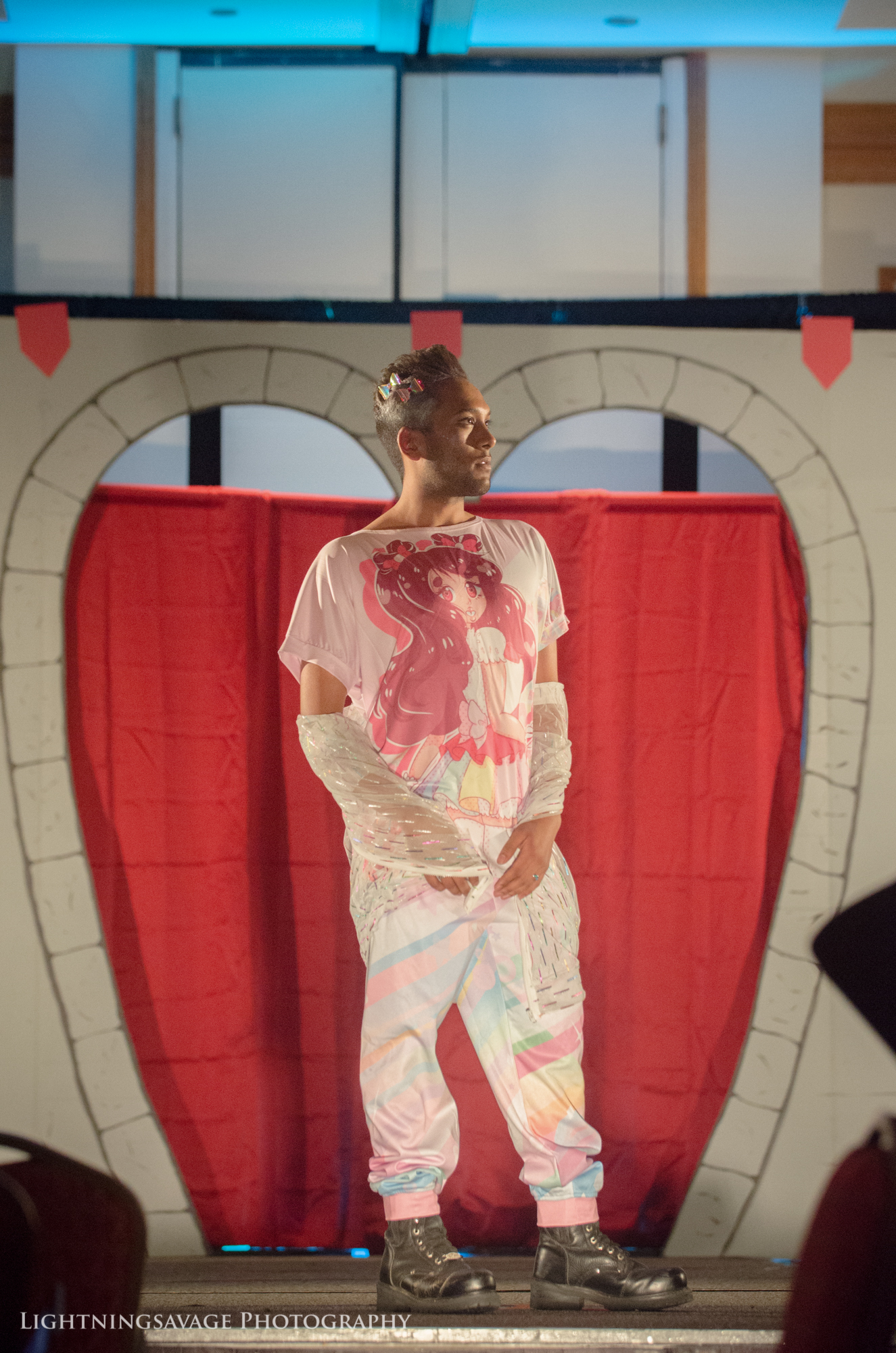
Ota-Q: @joahsovereign (IG)
The lighting is bad here too, but there’s only so much you can do in this situation. All of the models in this show were troopers. Hopefully next year they will be able to hold the fashion show in a bigger room!
Take your time
One of the most common pitfalls of fashion shows is that models tend to rush. Rarely does a show last as long as it should. The human body and brain like to rush when its onstage—models are nervous, anxious, or even terrified. In these situations, it’s natural for us to want to get away from the stressor. That’s just simple science. Very few people like to be scrutinized by a large audience.
For the model who struggles with this, I have one tip for you, and it’s the same for people who are camera shy: remember that you’re walking on that stage because you want people to look at you. If you didn’t want people to watch, why were you on stage, ultimately? Everyone models for a reason. Remember yours, and remember that nerves are completely healthy and normal, and you’ll be perfectly fine. The stage won’t kill you. It didn’t kill the person in front of you.
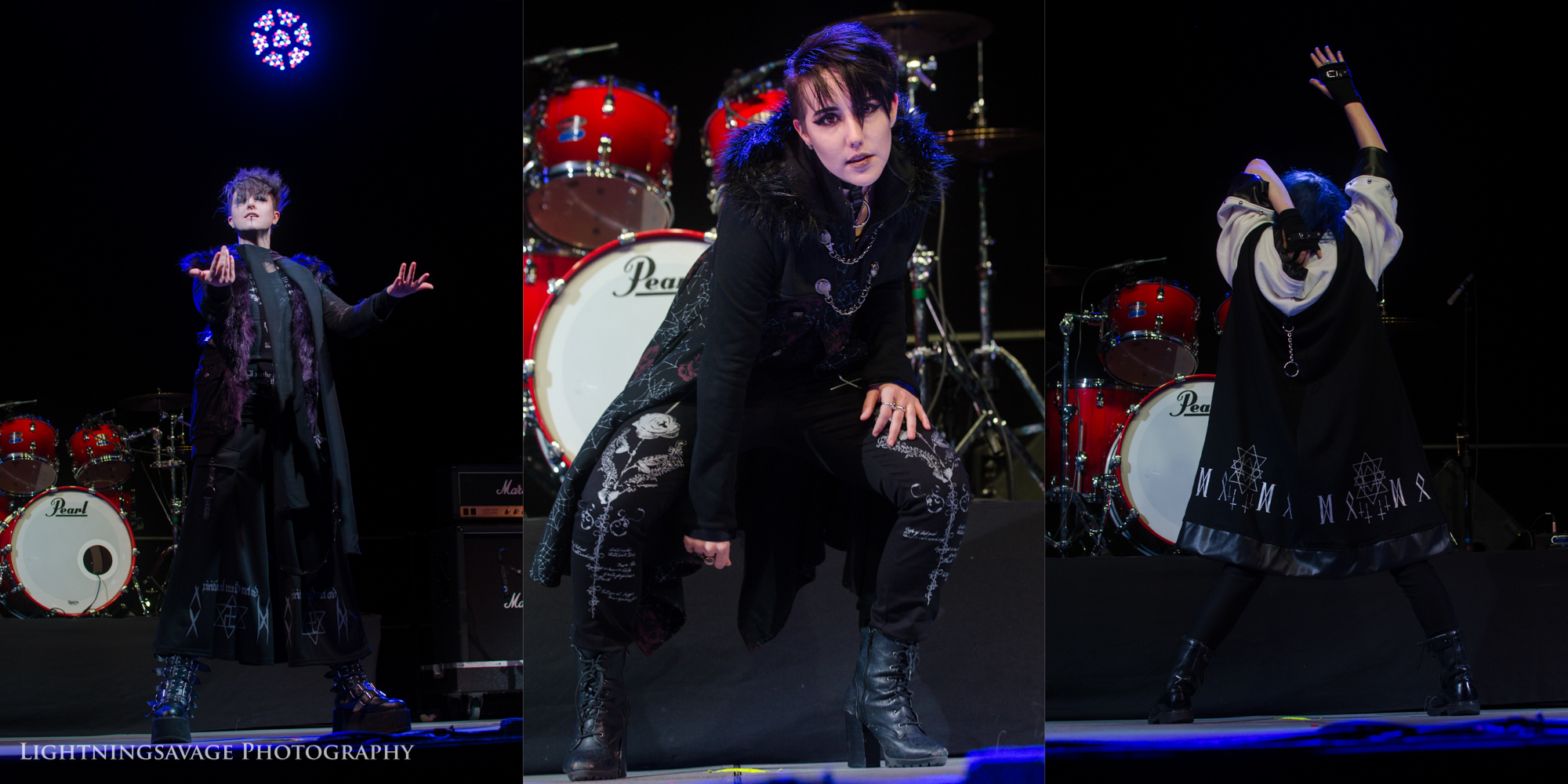
SEX POT ReVeNGe: Collin Quinlan, Harley Maldonado, Angel Hayes
Individual Tips
Match the mood
Each designer will have a mood that they want to convey during the show. Most of the big lolita brands, like Baby, the Stars Shine Bright, will have more somber moods focusing on elegance and flow. Other brands, like galaxxxy and Ota-Q, will want to show their models having a good time, and will want each model’s personality to shine. Others still, like I Do Declare, will want elegance to the extreme. It’s about talking with your designer and learning their vision for the show, and their expectations of you. Practice facial expressions in a mirror, and understand that you might have to act silly if you’re not that personality type.
Some brands, like Puvithel, will have an entire theatrical story planned for their show, with detailed expectations for each person. I love watching Puvithel’s shows—they’re so engaging and creative. One year, they told the story behind one of their prints onstage. Because of this, these shows can be rather specific in terms of posing and timing, so you might not really have to worry too much about these tips (except for lighting and angles), but it’s still a good idea to have in mind.

Baby the Stars Shine Bright: Robin Ray, @apfelbrine7 (IG) and Kate Goin, Momo Lynd
Some designers will be even more creative, like Puvithel. Rather than think of poses, she actually has her models portray characters throughout the fashion show. This goes a long way towards setting a mood and a tone, and to keep the mood of a show consistent.
Interact
The designer might give you a prop—a sign, a parasol, a stuffed animal. When you’re out on stage, interact with them. At a basic level, this will help you think of poses. You might open or close a parasol, twirl it, pose with a basket, look surprised holding a sign that says “bang”, etc. Props are a good way to think up poses if you’re stuck. From an audience perspective, it helps them see the personality of the brand and, in some cases, how the clothes interact more in day-to-day movements.
Move through your poses
This is a tip I got from Courtney, the designer for Ota-Q. Before a show, she tells her models to move through their poses when they get to a pose. This is a bit difficult to describe, but for now think about the moving pictures in Harry Potter, or video stills. You’re standing in a pose, but it’s really not stationary. You’re moving your arms, your legs, even jumping up and down at your mark. This goes hand-in-hand with prop interaction, and can go a long way toward keeping the energy of your walk alive. And, if you’re portraying a character, this will help you bring your character to life.
Change up poses
Something I’ve noticed after seeing so many shows is that models tend to have a single go-to pose—which is fine. But more and more, I’m seeing people go for their go-to pose at every posing spot on stage. This becomes repetitive and, if I may, a little bit boring after a while. I’ve modeled too, and even I tended to do this—it’s natural to want to go for what works. Practice in the mirror and come up with at least four different poses that you can go to without any props. Try to make them your own—having the same poses as everyone else is almost as bad as repeating your own!
Manage your nerves
If you’re someone who has extreme stage fright or have never been on stage before, it can be quite daunting. Being nervous is expected, and pretty much everyone on stage is nervous at one point or another. The problem comes when your nervousness or anxiety controls you—if you have a tendancy to freeze up or get clumsy. And, if you’re nervous, it can be really impossible for you to think about anything else. This can lead to you looking self conscious, shy, or not present.
When talking with some of the designers, they gave out some tips about how to ease nerves.
“I tell my models to clinch their buttcheeks before they go on stage. It’s something my choir teacher taught me and I still do it. It’s a really funny way to get rid of nerves/anxiety and telling the story is half the fun! Basically you squeeze your butt as hard as you can before you get on stage, then let go when you go on. Focusing so much on those muscles and the relief of finally relaxing kinda just makes your whole body relax.” —Courtney, Ota-Q Designer
Focusing on something silly and lighthearted, like the above tip from Courtney, helps too! As you walk on stage, you relax, and by the time your brain remembers it wants to be nervous again you’re already up and performing.
Puvithel had some other tips, one of which is about practice. Even if you’re walking alone, practicing with someone else can help you feel much more prepared. The other person can provide helpful concrit, help you fix some bad habits that you might not be seeing or feeling, and can even help you brainstorm more poses or a walking style. The models in Puvithel’s shows often portray characters, so this can also help you get into character before the show if your designer has a similar idea in mind.
“Find a friend (or make a new friend) to practice posing and walking with. You can give each other advice, and compliment each other on what [you] did right.” —Puvithel, Designer
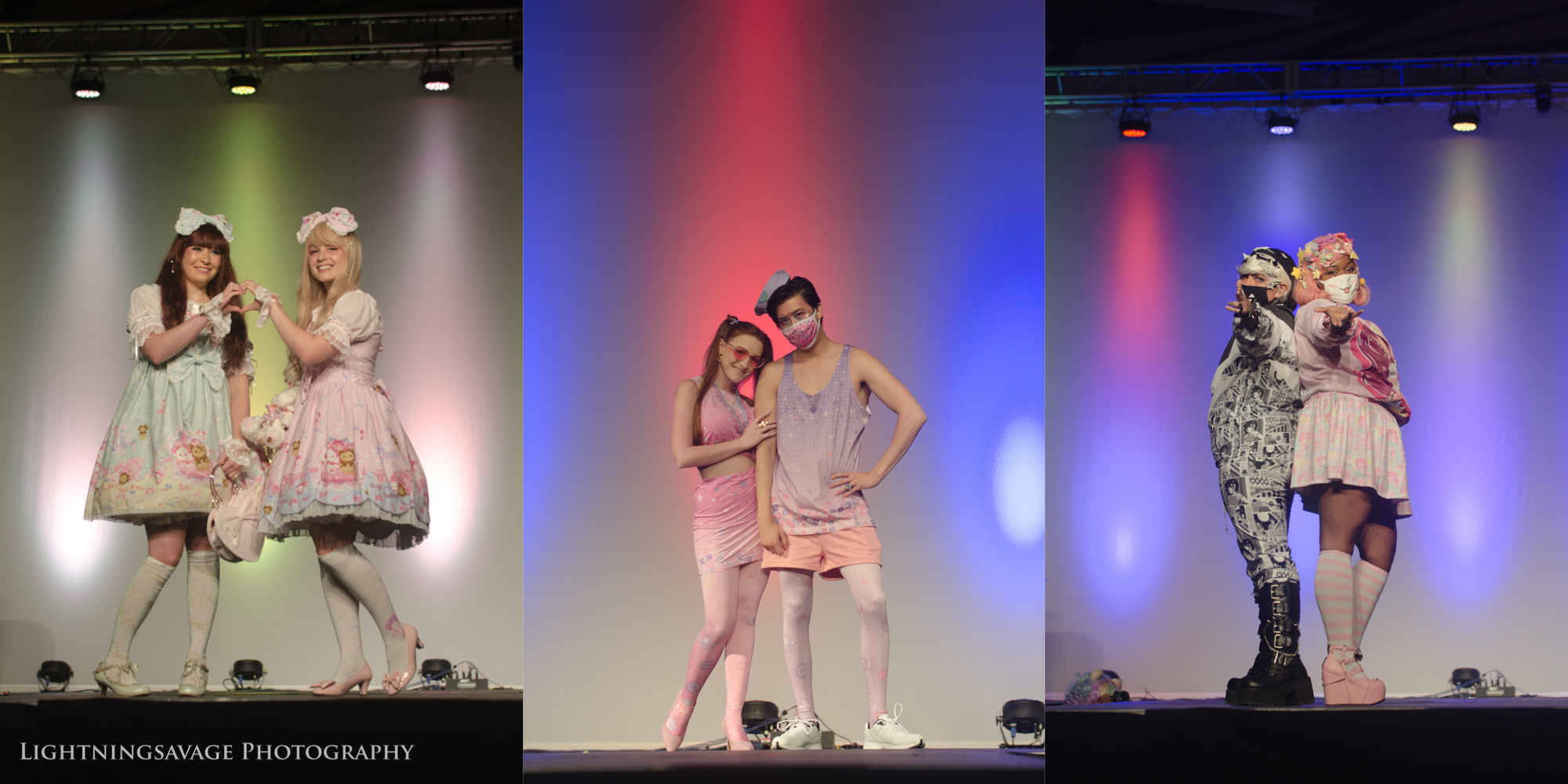
Baby, the Stars Shine Bright: unknown and Grace De Block | Puvithel: unknown and unknown | Ota-Q: Chey Skye and Eevee Cauliflower
Group
Interact with your counterpart, and don’t fight them for attention!
Certain shows or brands might want you to be onstage with someone else, in pairs, or in groups. I have just a one major pointer based on what I’ve seen over the years: just like props, interact with them! Remember, this is not a competition for who can get the most engagement. Even if you’re not a fan of the other model(s), when you’re up on stage, your friends. See if you can match or mirror their poses or actions, especially when you pose in the center together.
Both Baby, the Stars Shine Bright and Puvithel do this with a lot of their shows. In Puvithel’s case, the models interact to help tell the story of their show; a lot of the time, BTSSB models mirrored or interacted with each other.
Thanks for sticking with me throughout this—I know this series is a lot of information! I am still planning on releasing an index after everything is published so that you can keep track and can refer back to other posts.
Kal from Lightningsavage Photography specializes in creative portrait photography for J-Fashion enthusiasts and more. He has served as the J-Fashion event photographer for Oni-Con 2016–2020, as well as fashion shows, meetups, and personal shoots. He is also a co-owner of Kuroshiro Kawaii. You can follow him on Instagram at @lightningsavage_photography and @kaldec_
He is currently into visual kei and EGA fashions.








